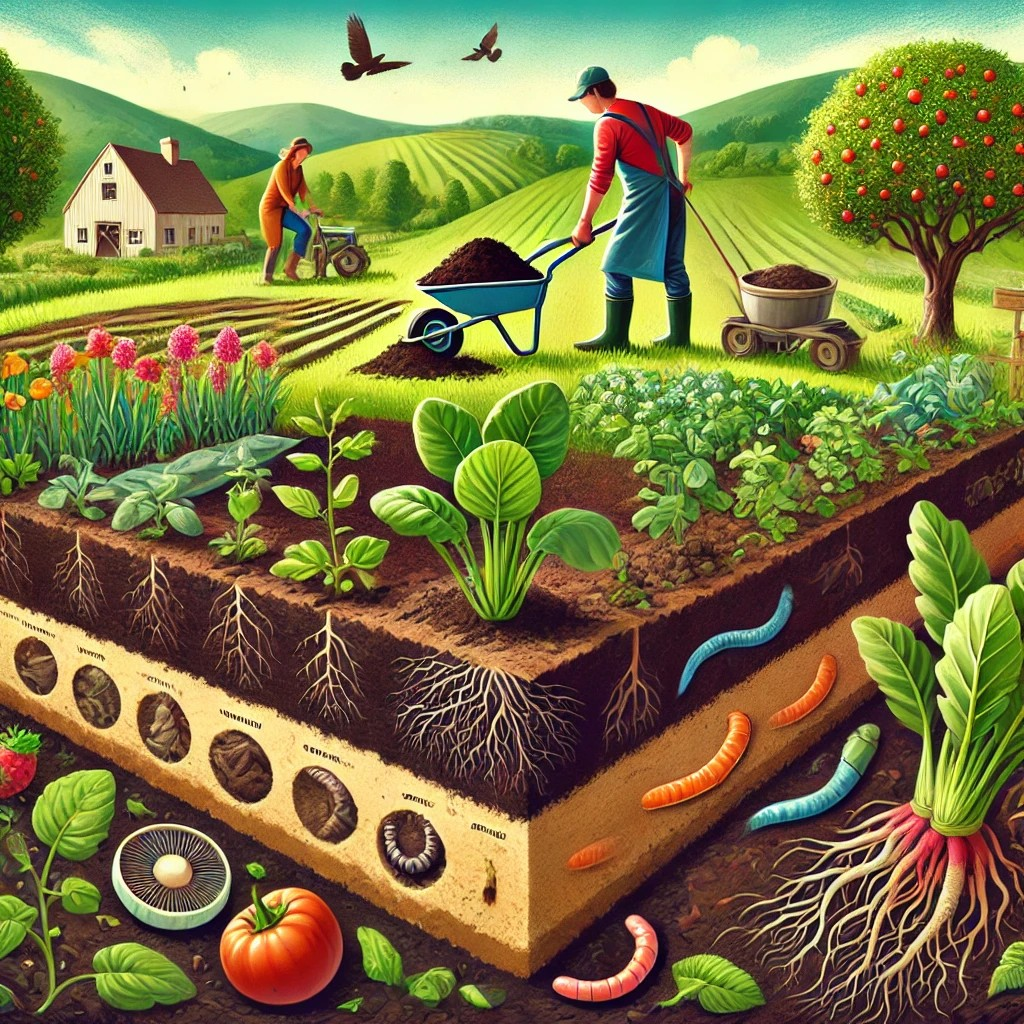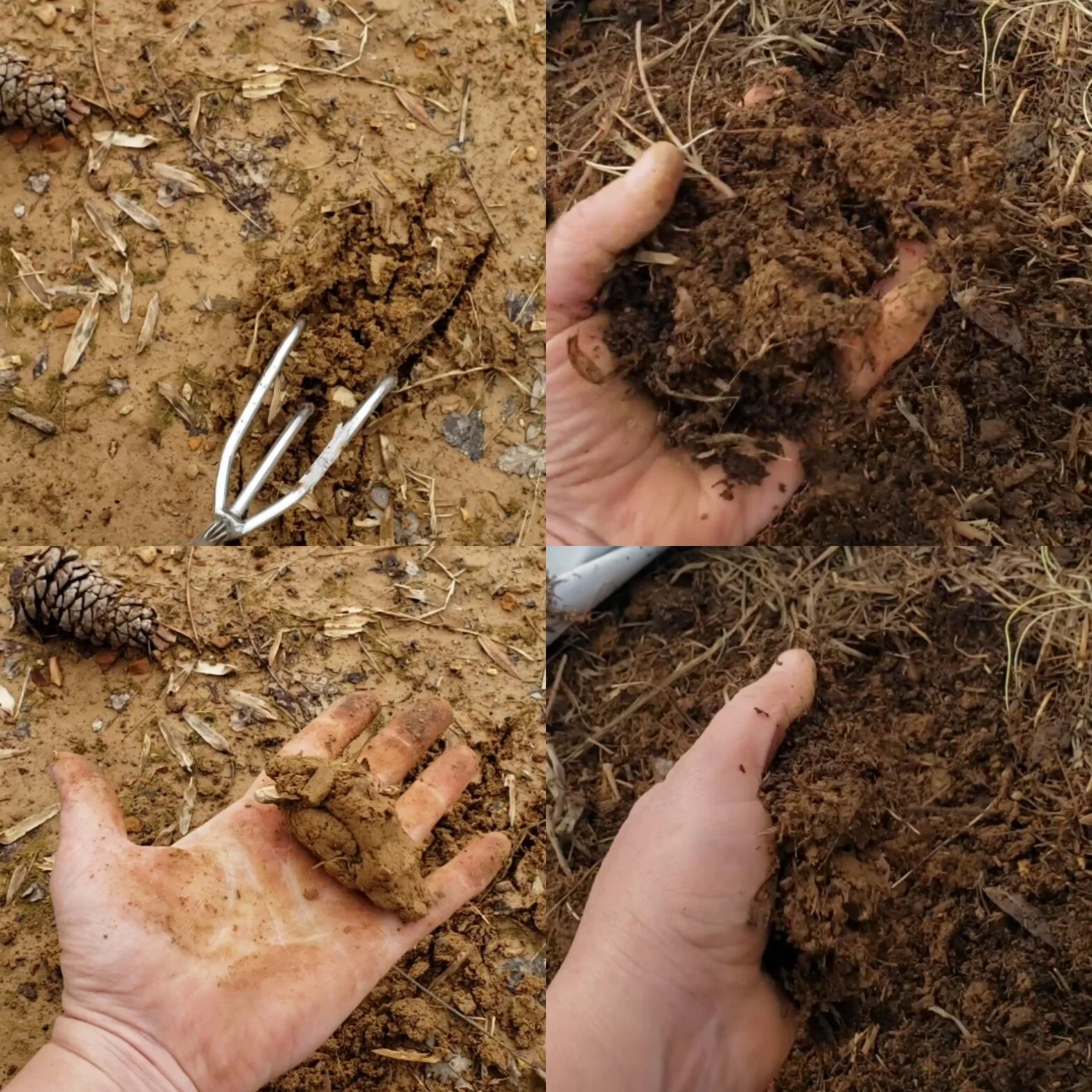Manifesting soil for the garden
Manifesting soil is not quick but I can see the results! Whaaallaa! It only took two years. But did it have to take so long? Not necessarily. I could have brought in compost, however, my concern with bringing in compost is, what is it made of? Is the compost made with Non-GMO or organic by-products? Are the grass or tree cutting full of fertilizers, or pesticides or herbicides? When I think of the food products going to the compost companies, I think of all the chemicals produce may have been exposed to. Beyond the Glysophate or Roundup, synthetic fertilizers or pesticides, what about the preservation sprays on fruits and veggies these days? I’m not a chemist, but the more I learn about these products, the more I question them.
Bearing this in mind, I opted for the long road. Two years ago, I purchased some chickens. They were all free-ranging chickens at one time. The first year, I experimented with the deep litter method in the coop. This method is now a key component of my composting system. With over 100 chickens free, they were fertilizing everywhere…it was a bit much. So I put most of the birds into tractors. About twenty birds and the six ducks continue to free-range and add to the deep litter.
The first batch of partially decomposed litter was spread over my first test area adjacent to a non treated area of equal size. Within four months the area which was composted was thick with lush happy plants; No signs of nutrient deficiency. The adjacent area was browning do the lack of rain. The plants were smaller and showing signs of distress and malnutrition. When I pulled back the composted plants, I could see black crumbles between the blades and stems. You guessed it, worm castings, the worms had come to eat the composting manure, straw, hay, grass cutting and pine needles.
Seeing the results, last September, I mowed the area short. Easy enough on the side not composted, but a real chore on the composted area. Even though we had not received rain in weeks, the field here was wet, like clog the mower, constantly, wet. This gave me confidence. So after, I cut the grass back, I applied my next batch of litter and compost materials to both sides. Added my some rock dust and tarped both sides of the bed. A 50 x 100 area, which will be planted with veggies this year.
Below, on the left, you can see what the ground looked like two years ago. This picture was taken recently just outside the tarped bed. On the right, you can see what it looks like under the tarp. I have a long way to go still, but I have confidence that I can now plant a garden with a much higher chance of providing healthy plants and nutrient-dense food to my family.
Happy Gardening!
First Spring Flowers
Have you ever foraged for plants or mushrooms? Have you ever wanted too? I encourage you to keep a local wildflower identification book handy. As the year goes by take a cutting of the plant and place it on the ID Page and date it. Then you will have a good idea when to expect them again, next year.
Here are the first four native plants found on my little farm. Purple Deadnettle, Hairy Bittercress, Chickweed, Hoary Puccoon. Seeing these little gems fills my heart with joy and excitement because I know winter is coming to an end and spring gardening is right around the corner.
Purple Deadnettle, Hairy Bittercress, Chickweed are all edible, can be used in teas and smoothies, dried or used medicinally. I can’t think of a bee that wouldn’t be eager to find these fresh flowers in the garden, or walkway. Each of these plants grows readily in many places and I encourage you to check them out.
The Hoary Puccoon (Lithospermum canescens), less common, is a member of the Borage family. As a member of the borage family, the little lovely is also a delight to the first foraging bees. With its long taproot, I would consider this a welcome addition to my soil biome. Research is conflicted as to the reason for the naming of the Hoary Puccoon, but all sources appear to agree that the name derives from the Algonquin people. The glorious taproots can be used in making a red dye, while the flowers can be used to make a yellow dye.
Hoary Puccoon should not be used as a food product or taken internally as it contains Pyrrolizidine Alkaloids. According to The Naturopathic Herbalist (https://thenaturopathicherbalist.com/plant-constituents/alkaloids/), only PAs which contain “unsaturated necine bases are hepatotoxic”. Hoary Puccoon may have as many as 7 PAs. I encourage you to read further on the processes in which PAs can affect the liver and other organs. This plant comes with serious consequences if used improperly. However, there are many indications, that it may have been used by the Menominee for external treatments. Some sources suggest it may have been used as a tea wash in treating fevers accompanied by spasms.
While this plant may not be a food product, it is a lovely little plant, which can provide food to early spring insects and contribute to the life cycle beneath our feet. I encourage you to look holistically at all things. I hope you are also lucky enough to have Hoary Puccoon on your homestead.
Happy Gardening!
Purple Deadnettle, Hairy Bittercress, Chickweed, Hoary Puccoon
IT’S GOING TO BE A FANTABULOUS 2021! JOIN US ON OUR JOURNEY
Well, I have started manifesting soil….with the help of the pigs and chickens
The farm is now in a very interesting location due to the fact that we have no top soil, yet….Well, I have started manifesting soil….with the help of the pigs and chickens. If you know me you know my “Happy, Healthy, Safe and Strong” moto. As a parent, my job is to make sure my kids are Happy, Healthy, Safe and Strong. So they can grow up to be HHSS. Then when they have children they can be, you guessed it, HHSS. Well, I have approached my farm with the same philosophy. I want the plants, animals (large and microscopic), insects (beneficial and sometimes not so much), fungus (edible to working), soil (and it’s biome), water (and it’s biomes), and even bacteria working for the farm, to be HAPPY, HEALTHY, SAFE, AND STRONG. To that end and for the For the Love of Experiments…This year I will share experiments and experiences here on the farm. Should be exciting (finger crossed). We’ll have Coffee with Critters and put our Hands in the Dirt. I’m going to share with you some of the ways we Close the Gaps and try some new ways to stack farm enterprises without breaking the back. We have an awful lot to do, but I have learned to Keep it Simple Sally and encourage you to do the same. Because at the end of the day we want to look out over our farm and Enjoy the View!




